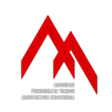Shape Grammar for House Facade along the Alley in Urban Kampung, Tambora, Jakarta
DOI:
https://doi.org/10.21776/ub.ruas.2022.020.01.13Keywords:
Shape Grammar, Urban Kampung, Pattern Language, House FacadeAbstract
The shape grammar can reveal the socio-spatial uniqueness that moulds the geometric shapes and elements of the house facade in a dense area of the urban kampung. The façade tends to not have the exact pattern due to adjustment of daily activities and needs in Tambora Jakarta. However, the grassroots have formed the pattern of events along the alley that represents contexts like milieu, economics, and social conditions. The alley has overlapping layers between private and public activities, which contribute to the geometric shapes and elements of the façade in Tambora. The house facade depicts activities and relationships inside and outside that manifest in geometric shapes and elements of the facade. Hereafter, this research combines the shape grammar for the geometric pattern of the facade and the pattern language for the qualitative contexts. The first step is categorising the geometric shapes and elements of the facade and the socio-spatial aspects into defined shape rules. Then, mapping the pattern language of activities and needs between inside–house program and outside–the use of space along the alley to delineate spatial relation. The result intends to comprehend the correlation between the logic of the geometric shape and facade elements concerning the qualitative context.References
Abdelsalam, M. (2012). The Use of Smart Geometry in Islamic Pattern: Case Study Mamluk Mosque. 6th ASCAAD Conference 2021: CAAD, Innovation, Practice (pp. 49-68). Bahrain: The Kingdom University.
AbdulRaheem, O. B., & Rayis, O. A. (2016). Design of Generative Model for the Language of Traditional Suakin Using Parametric Shape Grammar. International Journal of Computer- Aided Technologies, 3(2/3), 1-18.
Alexander, C. (1977). A Pattern Language: Towns, Buildings, Construction. Berkeley: Oxford University Press.
Al-Jokhadar, A., & Jabi, W. (2017). Qualitative Representation and Spatial Reasoning in a Rule-Based Computational Design Model. The Virtual and The Physical: Between the Representation of Space and the Making of Space (pp. 35-44). Wales: eCAADe.
Beirao, J., Duarte, J., & Stouffs, R. (2008). Structuring a Generative Model for Urban Design: Linking GIS to Shape Grammars. 26th eCAADe conference proceedings (pp. 929-938). Antwerpen: eCAADe.
Caetano, I., Santos, L., & Leitão, A. (2015). From Idea to Shape, from Algorithm to Design: A Framework for the Generation of Contemporary Facades. In G. Celani, D. M. Sperling, & J. M. Franco (Eds.), Computer-Aided Architectural Design Futures. The Next City - New Technologies and the Future of the Built Environment (pp. 27-546). Sao Paulo: Springer.
Desiyana, I. (2019). Interrogating Socio-Spatial Sustainability in Dense City: Case Studies in Kalianyar and Jembatan Besi. SMART: Seminar on Architecture Research and Technology #3, (pp. 119-136). Retrieved from https://smartfad.ukdw.ac.id/index.php/smart/article/view/25
Dore, C., & Murphy, M. (2013). Semi-Automatic Modelling of the Building Facade with Shape Grammars Using Historic Building Information Modelling. International Archives of the Photogrammetry, Remote Sensing and Spatial Information Sciences, Volume XL-5(W1), 57-64.
Dovey, K. (2016). Urban Design Thinking: A Conceptual Toolkit. London: Bloomsbury.
Duarte, J. P., & Beirão, J. (2011). Towards a Methodology for Flexible Urban Design: Designing with Urban Patterns and Shape Grammars. Environment and Planning B: Planning and Design, 38(5), 879-902.
Gargaro, S., & Fioravanti, A. (2013). A Context-Knowledge Model for Architectural Design: A holistic approach by means of artificial intelligence techniques. eCAADe 2013 Computation and Performance, 1, 81-90.
Jowers, L., Earl, C., & Stiny, G. (2019). Shapes, Structures and Shape Grammar Implementation. Computer-Aided Design, 111, 80–92.
Koltsova, A., Kunze, A., & Schmitt, G. (2012). Design of Urban Space at Pedestrian Scale: A Method for Parameterization of Urban Qualities. 2012 16th International Conference on Information Visualisation, 403-409.
Krier, R. (2010). Architectural Composition. Hong Kong: Edition Axel Menges.
Lee, J. H., & Gu, N. (2018). A Design Grammar for Identifying Spatial Uniqueness of Murcutt's Rural Houses. In Computational Studies on Cultural Variation and Heredity, KAIST Research Series (pp. 189-203). Singapore: Springer.
Lirenzsa, F., Ellisa, E., & Paramitha, A. (2020). Spatial negotiations in domestic space of the home-based garment industry in Kampung Tambora, Jakarta. IOP Conference Series: Earth and Environmental Science, 1-11.
Montenegro, N., Beirão, J., & Duarte, J. (2011). Public Space Patterns: Modelling the Language of Urban Space. International Conference on Advances in Design Sciences and Technology, on Connecting Brains Shaping the World. (pp. 1-13). Rome: EuropIA 13.
Paio, A., & Turkienicz, B. (2011). An Urban Grammar Study: A Geometric Method for Generating Planimetric Proportional and Symmetrical Systems. Nexus Network Journal, 3, 151-169.
Pasaribu, R. P., Siahaan, U., & Tobing, R. R. (2020). The Domination of Relationship Between “Function and Economy†in Production of “Public Visual View Space†on the “Open Façade†in Kampung Around Campus in Jakarta. Advances In Natural And Applied Sciences, 94-106. doi:10.22587/anas.2020.14.2.13
Prakash, A., Shekhawat, H., & Goyal, G. (2017). Visual Calculation Through Shape Grammar In Architecture. International Research Journal of Engineering and Technology (IRJET), 4(11), 293-301.
Rangkuty, G. I., & Widyastuti, D. T. (2019). Architectural Typology of the Malay Chinatown Facade (Case: Perniagaan Street of Malay Chinese Village Bagansiapiapi, Rokan Hilir, Riau). International Journal of Architecture and Urbanism, 3(1), 95-110.
Sönmez, N. O. (2018). A Review of the Use of Examples for Automating Architectural Design Tasks. Computer-Aided Design, 13-30.
Stiny, G., & Gips, J. (1972). Shape Grammars and the Generative Specification of Painting and Sculpture. C V Freiman (ed.) Information Processing 71, (pp. 1460-1465). Amsterdam.
Stiny, G., & Micthell, W. J. (1978). The Palladian Grammar. Environment and Planning B: Planning and Design, 5(1), 5-18. doi:10.1068/b050005
Stouffs, R., & Tuncer, B. (2015). Typological Descriptions as Generative Guides for Historical Architecture. NEXUS Networks Journal: Architecture and Mathematic, 785–805.
Downloads
Published
How to Cite
Issue
Section
License
Authors who publish with this journal agree to the following terms:
- Authors retain copyright and grant the journal right of first publication with the work simultaneously licensed under a Creative Commons Attribution License that allows others to share the work with an acknowledgement of the work's authorship and initial publication in this journal.
- Authors are able to enter into separate, additional contractual arrangements for the non-exclusive distribution of the journal's published version of the work (e.g., post it to an institutional repository or publish it in a book), with an acknowledgement of its initial publication in this journal.
- Authors are permitted and encouraged to post their work online (e.g., in institutional repositories or on their website) prior to and during the submission process, as it can lead to productive exchanges, as well as earlier and greater citation of published work (See The Effect of Open Access).












